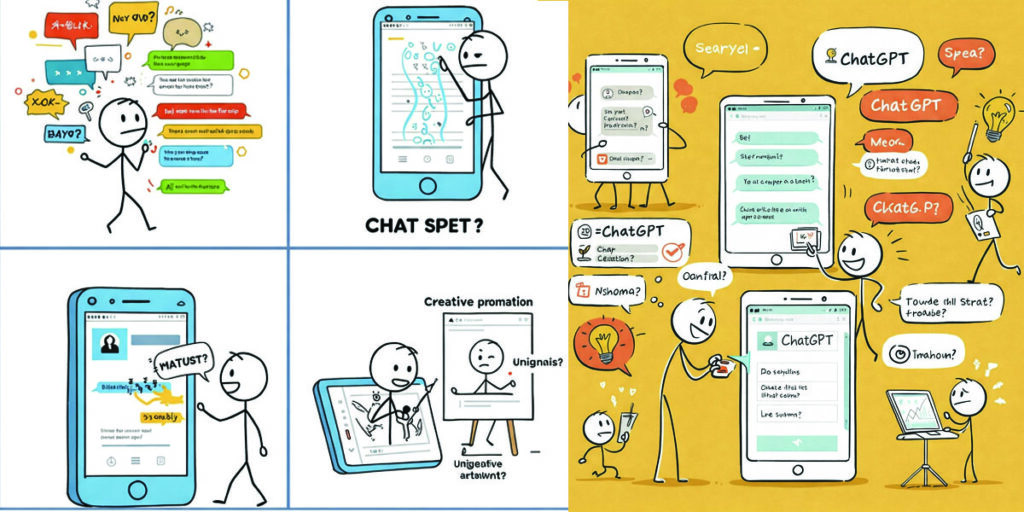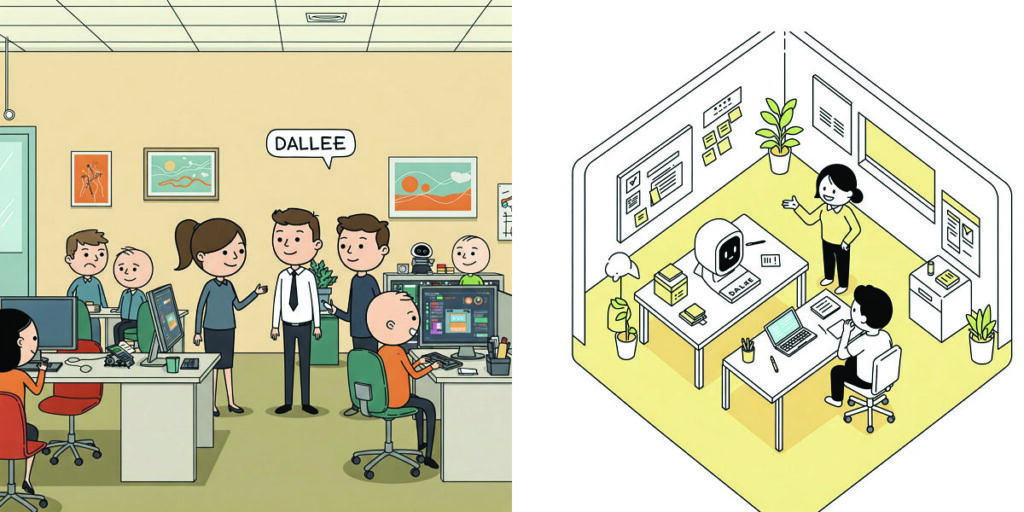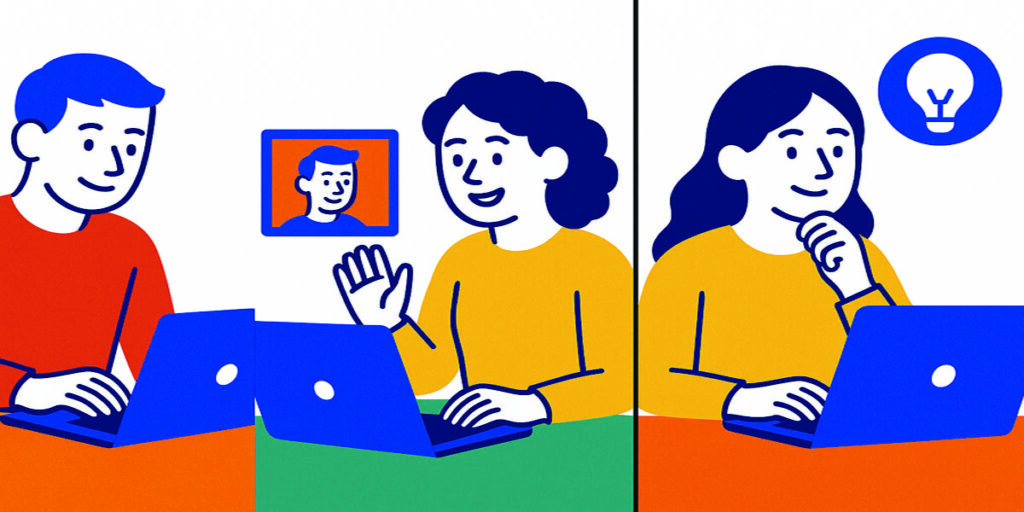Descript – AI-powered audio/video editor with features like transcription, voice cloning, and overdubbing.
Descript has emerged as a transformative force in the landscape of audio and video editing, leveraging the power of artificial intelligence to streamline workflows and democratize content creation. Its innovative features, including highly accurate transcription, lifelike voice cloning, and intuitive overdubbing capabilities, have garnered significant attention and adoption across various sectors. Understanding the historical context of media editing, the economic market Descript operates within, and the networking strategies that have fueled its growth provides a comprehensive picture of its impact and potential.
A Historical Perspective on Media Editing
The journey of audio and video editing has been one of constant evolution, driven by technological advancements. Early forms of audio editing involved physically cutting and splicing magnetic tape, a laborious and time-consuming process. Similarly, video editing began with linear editing suites, where footage was arranged sequentially on videotape. These methods demanded specialized skills and expensive equipment, limiting access to a select few.
The advent of non-linear editing (NLE) systems in the late 20th century marked a significant turning point. Software-based platforms allowed editors to manipulate digital media non-destructively, offering greater flexibility and efficiency. Tools like Avid Media Composer and Adobe Premiere Pro became industry standards, empowering professionals with sophisticated features and control. However, these powerful tools often came with steep learning curves and substantial costs, still presenting barriers for many aspiring creators.
The rise of the internet and digital content creation in the 21st century further fueled the demand for accessible and efficient editing solutions. Platforms like YouTube and social media democratized content distribution, leading to an explosion of amateur and semi-professional creators. This new wave of creators sought tools that were easier to learn and use, without compromising on essential editing capabilities.
Against this backdrop, Descript emerged, capitalizing on advancements in artificial intelligence, particularly in natural language processing and speech synthesis. By integrating these technologies into a user-friendly interface, Descript aimed to bridge the gap between professional-grade editing power and accessibility for a wider audience.
The Economic Market for Audio and Video Editing Software
The market for audio and video editing software is dynamic and multifaceted, catering to a diverse range of users, from individual hobbyists to large media organizations. Several key segments characterize this market:
Professional Editing Software: This segment comprises high-end NLE systems like Avid and Premiere Pro, offering advanced features for complex projects in film, television, and professional video production. These tools often involve subscription models or perpetual licenses with significant upfront costs.
Semi-Professional/Consumer Editing Software: This segment includes more accessible and affordable options like Final Cut Pro, DaVinci Resolve (free and paid versions), and Camtasia. These tools cater to independent filmmakers, YouTubers, educators, and businesses creating marketing content. They typically offer a balance of features and ease of use.
Mobile Editing Apps: With the proliferation of smartphones and tablets, a growing market for mobile editing apps has emerged. These apps, such as LumaFusion, InShot, and CapCut, allow users to perform basic to intermediate editing tasks directly on their mobile devices, catering to social media content creators and on-the-go editing needs.
AI-Powered Editing Tools: Descript occupies a unique and rapidly expanding niche within this market, leveraging artificial intelligence to offer novel editing workflows. Its focus on transcription as the primary editing interface, coupled with voice cloning and overdubbing, differentiates it from traditional timeline-based editors. This segment is characterized by innovation and the potential to significantly alter established editing paradigms.
Market Drivers: Several factors drive the growth of the audio and video editing software market:
- Increasing Demand for Digital Content: The ever-growing consumption of online video and audio content across various platforms fuels the need for efficient editing tools.
- Democratization of Content Creation: The ease of capturing high-quality audio and video with smartphones and affordable cameras has empowered more individuals and businesses to create content.
- Advancements in Technology: Continuous advancements in processing power, storage capacity, and artificial intelligence enable the development of more sophisticated and user-friendly editing software.
- Remote Work and Collaboration: The rise of remote work has increased the demand for collaborative editing tools that facilitate seamless teamwork across different locations.
- The Creator Economy: The burgeoning creator economy, where individuals monetize their online content, drives the need for tools that streamline production workflows and enhance content quality.
Descript strategically positions itself within this market by appealing to both new creators seeking ease of use and professionals looking for innovative solutions to enhance their productivity. Its subscription-based model offers different tiers catering to various needs and budgets, making it accessible to a wider audience compared to some high-end professional software.
Networking and Growth Strategies of Descript
Descript’s rapid growth and increasing influence in the media editing landscape can be attributed to a combination of innovative product features and effective networking strategies:
Product-Led Growth: Descript’s core strength lies in its unique and powerful features that address key pain points in the traditional editing process.
- Transcription as the Editing Interface: By automatically transcribing audio and video, Descript allows users to edit their media by manipulating text. This intuitive approach eliminates the need to navigate complex timelines and waveforms for basic edits, significantly accelerating the editing process. For example, deleting a word in the transcript automatically removes the corresponding audio/video segment.
- Voice Cloning and Overdubbing: Descript’s AI-powered voice cloning technology enables users to create a realistic digital replica of their voice. This allows for seamless overdubbing of mistakes or additions to audio and video without the need for re-recording, a groundbreaking feature for content creators. Imagine correcting a spoken error simply by typing the correct words, with your AI voice seamlessly replacing the mistake.
- Multi-track Editing and Collaboration: Descript offers robust multi-track editing capabilities for both audio and video, along with collaborative features that allow multiple users to work on the same project simultaneously. This is particularly valuable for remote teams and distributed content creation workflows.
- Integration with Other Tools: Descript integrates with popular platforms like Zoom, Riverside.fm, and SquadCast, streamlining the workflow for podcast and video recording and editing. This interconnectedness enhances its utility for creators who rely on these platforms.
Community Building and Engagement: Descript has fostered a strong and engaged community of users through various initiatives:
- Educational Content: Descript provides extensive tutorials, webinars, and documentation to help users learn and master the platform. This investment in user education contributes to higher adoption and user satisfaction.
- Active Social Media Presence: Descript maintains an active presence on social media platforms, engaging with users, sharing updates, and showcasing user-created content. This fosters a sense of community and provides valuable feedback.
- User Forums and Feedback Mechanisms: Descript actively solicits and incorporates user feedback into its product development roadmap. This user-centric approach ensures that the platform evolves to meet the needs of its community.
- Partnerships and Integrations: Strategic partnerships with other technology companies and platforms expand Descript’s reach and integrate it into existing creator workflows.
Strategic Marketing and Positioning: Descript has effectively positioned itself as a modern, AI-powered alternative to traditional editing software:
- Highlighting Innovation: Marketing efforts emphasize Descript’s unique AI-powered features and their ability to significantly improve editing efficiency and accessibility.
- Targeting a Broad Audience: While catering to professionals, Descript also targets new and emerging creators who may find traditional editing software intimidating.
- Showcasing User Success Stories: Testimonials and case studies from satisfied users demonstrate the real-world benefits of using Descript.
- Freemium Model: Offering a free tier with limited features allows potential users to experience the core functionality of Descript before committing to a paid subscription, facilitating wider adoption.
Network Effects: While not a traditional social network, Descript benefits from indirect network effects. As more creators adopt and rely on Descript, the value of the platform increases for all users. This is driven by:
- Increased Knowledge Sharing: A larger user base leads to more online tutorials, forum discussions, and shared workflows, making it easier for new users to learn and troubleshoot.
- Improved Collaboration: As more collaborators adopt Descript, the platform becomes more valuable for team-based projects.
- Enhanced Ecosystem: Integrations with other popular tools become more valuable as more users rely on Descript as a central part of their content creation workflow.
- Attraction of Talent and Developers: A growing and successful platform attracts talented developers and engineers, leading to further innovation and product improvements.
The Future of Descript and AI in Media Editing
Descript’s trajectory suggests a significant and ongoing role for AI in the future of media editing. Several trends indicate the potential evolution of this field:
- Enhanced AI Capabilities: Continued advancements in machine learning will likely lead to even more sophisticated AI-powered editing features, such as automated sound design, intelligent color correction, and AI-driven storytelling assistance.
- Deeper Integration: AI-powered editing tools will likely become more deeply integrated into the entire content creation lifecycle, from recording and transcription to distribution and analysis.
- Increased Accessibility: AI will continue to democratize media editing, making powerful tools and workflows accessible to a wider range of creators, regardless of their technical expertise.
- Personalized Editing Experiences: AI could enable personalized editing workflows and recommendations based on user preferences and project requirements.
- The Metaverse and Immersive Content: As the metaverse and immersive content formats gain traction, AI-powered editing tools will play a crucial role in creating and manipulating these new forms of media.
Descript is well-positioned to capitalize on these trends. Its early adoption of AI and its user-centric approach provide a strong foundation for future growth and innovation. By continuing to leverage the power of artificial intelligence and nurture its growing network of users, Descript has the potential to further revolutionize the way audio and video content is created and edited. Its impact extends beyond mere efficiency gains; it empowers creators to focus on their storytelling and artistic vision by automating and simplifying the more technical aspects of media production. The confluence of historical evolution, strategic market positioning, effective networking, and the transformative power of AI paints a compelling picture of Descript’s journey and its promising future in the dynamic world of media creation.




















